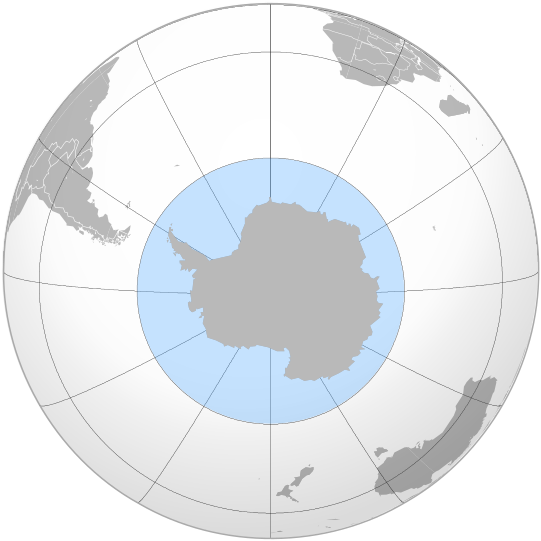It may be time to brush up on your geography knowledge: there are actually five oceans on planet Earth, not four as you may have been taught.
Back in 2021, National Geographic officially recognized the Southern Ocean as the world’s fifth ocean. The announcement marked the end of decades of dispute over the body of water surrounding Antarctica and, quite literally, put the Southern Ocean on the map.
Historically, only four oceans were officially recognized – the Atlantic, Pacific, Indian, and Arctic Oceans. These are defined by continent, making the Southern Ocean somewhat of an anomaly – it is defined, instead, by current.
The Antarctic Circumpolar Current (ACC) flows from east to west around Antarctica and was established 34 million years ago. It is centered at a latitude of 60 degrees south (the northern boundary of the Southern Ocean). The current creates an invisible ring around Antarctica, in which waters are colder and less salty than those to the north. However, it has long been debated by geographers whether the oceanic ring was merely an extension of the Pacific, Atlantic, and Indian Oceans, or whether it was an ocean in its own right.

The Southern Ocean is the body of water encircling Antarctica.
The U.S. Board of Geographic Names recognized the Southern Ocean and approved its name in 1999. The proposed boundaries were presented to the International Hydrographic Organization (IHO) in 2000, but are still yet to be agreed on some 23 years later. Meanwhile, the National Oceanic and Atmospheric Administration (NOAA) has only recognized the Southern Ocean since February 2021.
“The Southern Ocean has long been recognized by scientists, but because there was never agreement internationally, we never officially recognized it,” National Geographic Society Geographer Alex Tait told National Geographic.
The National Geographic Society has been making maps for over a century and has employed geographers to oversee all changes made to every map published since the 1970s. They generally follow the IHO when it comes to marine nomenclature, hence the acknowledgment of the Southern Ocean marks a break from that tradition.
It is hoped that the recognition will raise awareness for the world’s newest ocean and its ecologically distinct ecosystem, and also promote much-needed conservation efforts – industrial fishing has been an issue in the Southern Ocean for years.
As for the future of the Southern Ocean, that remains uncertain due to climate change. Antarctica’s waters are warming and its ice sheets are melting. How this affects the fledgling ocean only time will tell – we can only hope that its formative years run smoothly and that the Southern Ocean can make some waves before things get too toasty.
An earlier version of this article was published in June 2021.
Source Link: The World Has Five Oceans, Not Four – Meet The Newest Addition